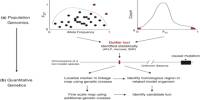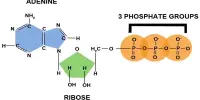According to the WHO, 5.4 million people are bitten by snakes each year, and around half of those bites result in venom injections. Between 81,000 and 138,000 people pass away, while around three times as many experience lifelong injuries such as amputations. Due to their size, children often suffer the most severe effects.
Polyclonal antibody combinations made from the blood of inoculated animals have been the mainstay of our treatment for snakebite for 128 years. Although these medications have been shown to be useful, they occasionally result in significant side responses. Thus, efforts to find new methods of treating severe snakebite envenoming are underway.
An international team of scientists led by DTU has just created a new modernized prototype treatment that is effective against the venom of African and Asian elapid snakes, including several cobra, mamba, and krait species many of which are among the deadliest snakes in the world.
“We have previously developed antibodies against the venom toxins from single snake species; however, our new results demonstrate that our technology has great potential in neutralizing toxins from multiple species, even from different continents. This broadened cross-neutralization capacity is very promising. It could provide the basis for more effective treatments for snakebite victims in the future,” says Andreas Hougaard Laustsen-Kiel, a professor at DTU Bioengineering.
He conducted the research with colleagues at DTU, ETH Zurich, Universidad de Costa Rica, and industrial partners Sophion Bioscience and IONTAS. Their work is published in Nature Communications.
The antibody we used worked against different neurotoxins derived from different snake species from different parts of the world. These toxins are far from identical but share some crucial similarities in their structure. And apparently, these are just enough for our antibody to display extensive cross-reactivity. We have yet to establish the boundaries of what this antibody can neutralize. Still, we would like to see if it shows the same promise concerning neurotoxins from, for example, the blue krait, the banded krait, and the Egyptian cobra.
Andreas Hougaard Laustsen-Kiel
New antibody works against several neurotoxins
In essence, their strategy entails creating antibodies with 100% human origins, which have fewer side effects, competitive prices, and, when optimized, higher efficacy. They choose antibodies that bind effectively to the toxins in the venom, enabling widespread neutralization, using phage display technology, a prominent in vitro drug discovery tool.
“There has been a revolution in recombinant antibody technology over the last three decades. I am delighted to be involved in these efforts to direct phage display technology to the blight of snakebite envenomation,” says John McCafferty, the inventor of antibody phage display. He founded IONTAS and has recently established a new anti-venom group at the University of Cambridge.
Deliberately selecting hundreds of antibody candidates and testing the most promising against toxins in different snake venoms, the researchers found that one in particular (2554_01_D11) was especially potent and broadly neutralizing. It was able to bind to several neurotoxins found in the venoms of the black mamba, monocled cobra, forest cobra, spectacled cobra, king cobra, and many-banded krait.
Further in vivo tests demonstrated that the antibody prevented or postponed venom-related mortality. The antibody totally shielded the envenomed mice from mortality when exposed to the monocled cobra.
“In light of the positive results regarding the neutralization of venom from the monocled cobra, we mimicked a true rescue situation, injecting mice with cobra venom and then administering the antibody. And sure enough, we were able to prevent death when the antibody was injected rapidly after envenoming,” says José María Gutiérrez, emeritus professor of Instituto Clodomiro Picado, University of Costa Rica.
Although though the black mamba venom could not be stopped, the antibody did prolong survival by many hours, indicating that the venom was partially neutralized by the antibody.
“These are remarkable results,” says Andreas Hougaard Laustsen-Kiel:
“The antibody we used worked against different neurotoxins derived from different snake species from different parts of the world. These toxins are far from identical but share some crucial similarities in their structure. And apparently, these are just enough for our antibody to display extensive cross-reactivity. We have yet to establish the boundaries of what this antibody can neutralize. Still, we would like to see if it shows the same promise concerning neurotoxins from, for example, the blue krait, the banded krait, and the Egyptian cobra.”
The researchers expect antibodies, such as 2554_01_D11, will be helpful when designing future envenoming therapies. However, they also emphasize that their pipeline for discovery may help in the creation of other broadly neutralizing antibodies against toxins from other animals, bacteria, viruses, and parasites, as well as in the creation of cancer treatments.
















